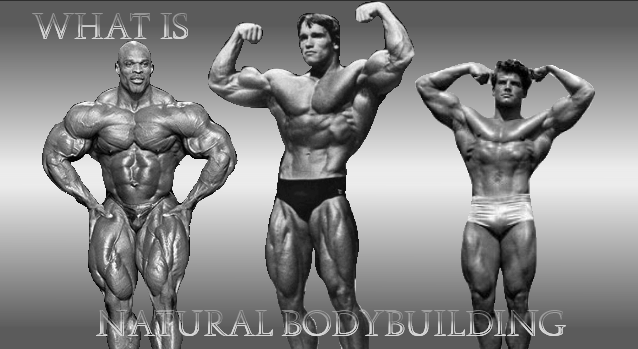How To Define Weight Training
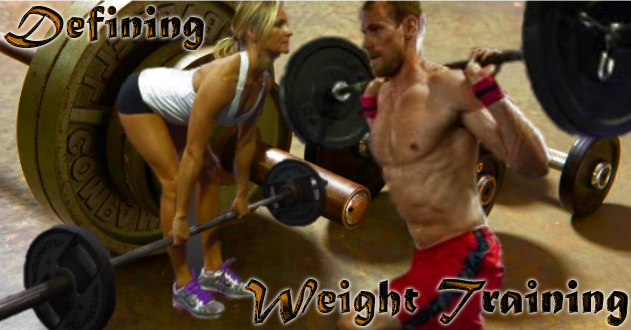
Let’s define weight training by making it easier to understand. You are not limited by other exercise laws or training regimes, as you may be from Bodybuilding, Powerlifting or Olympic lifting.
The definition of weight training lies in its diversity. To increase overall body strength any form of resistance used with strict form/ Barbells Dumbbells, Machinery etc., are all attributes of resistance used in weight training to increase strength.
Weight Training stands on its own as the No# 1 way to increase strength and enhance body contour in both men and women.
Let’s Define Weight Training
To define weight training is easier when you separate the two words.
‘Weight’ of any kind is merely what is used to provide resistance: resistance or the increasing of it creates more gravitational force; increased intensity forces the muscles and connective tissue into stronger contraction levels that ultimately increase strength.
(Training), is often the most overlooked word in Weight Training:
the training represents everything the
resistance does not.
As you become more adept, the training builds confidence and disciple into daily life and your training routine; the training is also an ongoing quest, signifying respect for your lifting level as strength and conditioning increases.
As consistency is achieved, discipline becomes the new devoted effort towards your training goal... becoming the mistress that can be a double edged sword, reminding you not to miss regular scheduled workouts and often making you feel guilty when you do...
Therefore the more disciplined you become; the easier and more manageable your training also becomes.
Weight training is the opposite of aerobic, which is 'anaerobic' - this activity stimulates muscle differently from other activities, as repetitions increase in each set a natural occurring build-up of what is called (lactic acid) also increases.
This is a bi-product of the Pump often accompanied by a mild burning sensation experienced in the muscles your training as the workout progresses. This can often be associated to a strong sense of well being as oxygen and hormonal levels increase during and after the workout.
Compound vs Isolation Exercises

Compound Exercises: are usually associated to free weights, simply means: 2 or more joints or groups of muscles assist in the exercise. E.g. as in the Squat; the Quadriceps, Hamstrings, Glutes, lower back even the shoulders all act as support and stabilizers throughout the exercise.
Barbells rank as as the King, for increasing strength and activating new muscular growth.
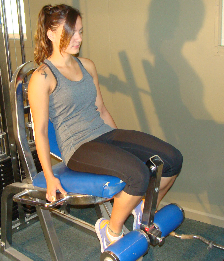
Isolation Exercises: are where the movement is
restricted to one area or joint as in the leg extension exercise, where most of
the resistance is isolated to the knee joint, where by strongly affecting the
quadriceps of the upper leg.
Each group of exercises have their own dynamics and uses: Compound exercises are more associated to building overall strength as multiple joints and muscles assist in each exercise.
Isolation exercises add verity and round out a weight training routine; these exercises add shape, couture and symmetry to each muscle group to aesthetically enhance the overall shape of your physic.
Using The Basic Principles

Reps: or repetitions are bundled in different increments to give different results. The amount of reps preformed in each exercise is often related to each individual athletic goal.
4 – 6 reps are commonly associated to Strength training. The 8 to 10 rep range does increase strength; but commonly, this range enhances the aesthetics of muscle shape and body contour. 15 – 25 reps are associated to endurance training as seen in circuit or cross fit training.
Sets: sets are bundled or grouped by the amount of repetitions preformed, meaning: 10 repetitions is one set completed, this brings order to the work out and is easier for the athlete to keep track of total reps and sets preformed as the workout progresses.
Equipment Used to Define Weight Training
Barbells, Dumbbells, Weight machinery or body weight exercises all have their respective place in the definition of weight training.
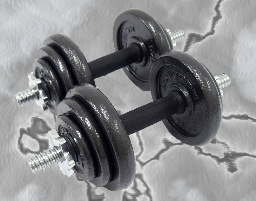
Dumbbells: are held individually dumbbells do increase strength, but are more commonly associated to bilateral movements, inflicting different lifting stress than the barbell, the nervous system and stabilizer muscles are activated differently to coordinate each individual lift, often used in isolation exercises.
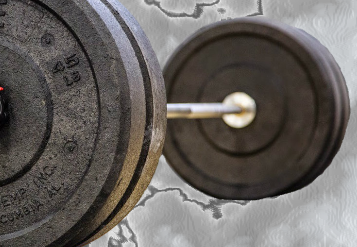
Barbells: because there is one continuous bar connecting the resistance, makes these exercises unilateral. The barbell is associated to compound movements and is often a preferred tool to increase strength in many exercises such as: the Squat, Dead lift, bench press etc.
Weight Machines: most gyms carry a wide verity of weight machines
that are designed to exercise specific body parts. These usually consist
of cable, pulley or cam systems with a weight stack and pin system. Other types may consist of bearing and slider systems; e.g., Smith Machine or Angled Leg
Sled etc.

Machines add verity reaching certain muscles that free
weight training cannot. Some folks have a tendency towards over reliance of using
machinery, but... free weight training will always build greater strength and stronger
connective tissue.
Body weight training is another means of training and exercising using the body as the primary resistance, these exercises are also very rewarding and do increase strength and enhance muscle growth of both upper and lower body.
Weight Training’s History
Weight training's history goes back many centuries even over millennia as far back as ancient Greece and Persia where gymnasiums with workout and bath facilities were common in some areas of both Empires.

Health, and athletic strength were highly prized and sought after in these advanced cultures. Ancient Greek Warriors and athletes often lifted selected stones as resistance, as a result some of these athletes became immortalized in stone themselves!
Much later in the 18th century the early barbells were sphere shaped and often filled with sand or lead shot. Dumbbells were in the form of the kettle bell which has had a popular resurgence in fitness today.
The mid-20th century has become witness to the modern fitness movement explosion.
The 60's and 70's begin to build momentum in the amount of new gymnasiums and equipment used in the gyms we see and use today; the 1990's now begin to see women take weight training and its benefits seriously.
Weight Training Health Benefits
So what are the benefits from weight training? Well... the first and most obvious one is: as body strength increases – so does efficiency at daily physical tasks. But when we define weight training is there any other positive attributes that you can receive from it?

For mature adults and
seniors weight training helps prevent muscle, bone and connective tissue
degeneration, it’s never too late to reboot the regeneration process.
The physical act of weight training also releases its hold on chemicals such as: Serotonin, Norepinephrine and Dopamine, these neurotransmitters are (AKA) reuptake inhibitors, this release can give a powerful euphoric sense of well being.
Endorphin's enhance stronger sleeping patterns and greatly relieve stress and anxiety from life’s ups and downs, ultimately countering and improving mood and feelings of depression.

Muscle tissue is what is known as; (active tissue), only from weight and resistance training can this type of muscle activation occur.
As
muscle size and strength increase in both men and women, your metabolic rate or metabolism will also increase.
So what does all this mean?
It means active tissue in going to accelerate calorie expenditure, your body will burn a third more calories even as you rest; than a non-active person, this anabolic change is referred to as the fat furnace .
Risks of Weight Training
Note: if you’re non-active or new to weight training or fitness of any kind a great first step would be to see your doctor or health care physician so he or she can help you asses your current fitness level or health history.

Warm-up:
The way to define weight training especially where free weights are concerned is: the warm-up often gets over looked, this is a mistake.
It’s important to warm-up and lubricate the muscles and joints to prevent injury, not to mention; the warm-up increases oxygen levels and stimulates the
brain and nervous system in preparation for rigorous activity.
Stretching:
Stretching after weight training re-stretches and lengthens the muscle bellies back to their normal size after training, this also stretches what is known as; (fascia) this thin see-through skin like membrane that covers and supports muscle tissue, can tighten and inhibit new muscle growth if stretching isn’t adhered to.
Proper nutrition and hydration can be classed as the second half of the equation as we define weight training, for beginners this accounts for 50 to 60% of your success towards your training goal. Muscle will struggle to grow or increase in strength without proper nutrition and hydration.
Resistance should always be kept in-line with your current fitness level, lifting too much or heaving weight is not weight training! This typically over stresses connective tissue and often leads to injury or overtraining.
To Sum Things up:
To define weight training and what you want from it is first: and most importantly, set a realistic and an achievable ‘Goal ’.
The goal will help you define your purpose and solidify your efforts and make you accountable to them.
Always use good lifting form in an exercise routine designed for your lifting level. Have the exercises, (Set and Rep ranges), match your athletic goal.
As strength and confidence grows be progressive as you advance, challenge yourself with the resistance, this is the only way strength increases.
Try not to become too routine with your workout, meaning: change the exercises, use dumbbells then switch to barbells or machines.
Muscle and strength gains are realized or enhanced by the amount of stress inflicted on them; different angles, rep tempo and types of resistance used, all play a large part in achieving the results you want to see.
I hope the article was able to define weight training and shed some light on it for you; thank you for your interest and stopping by.
DWT




